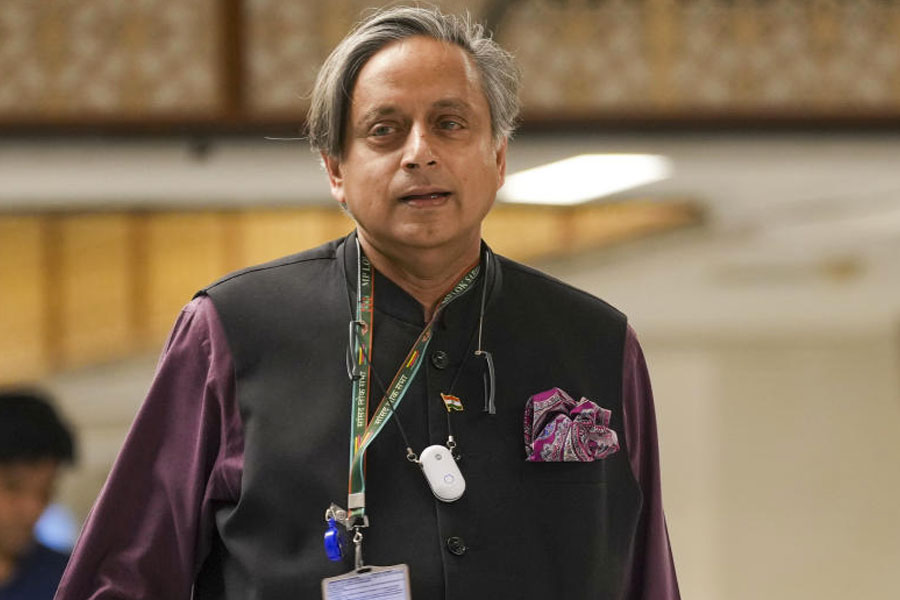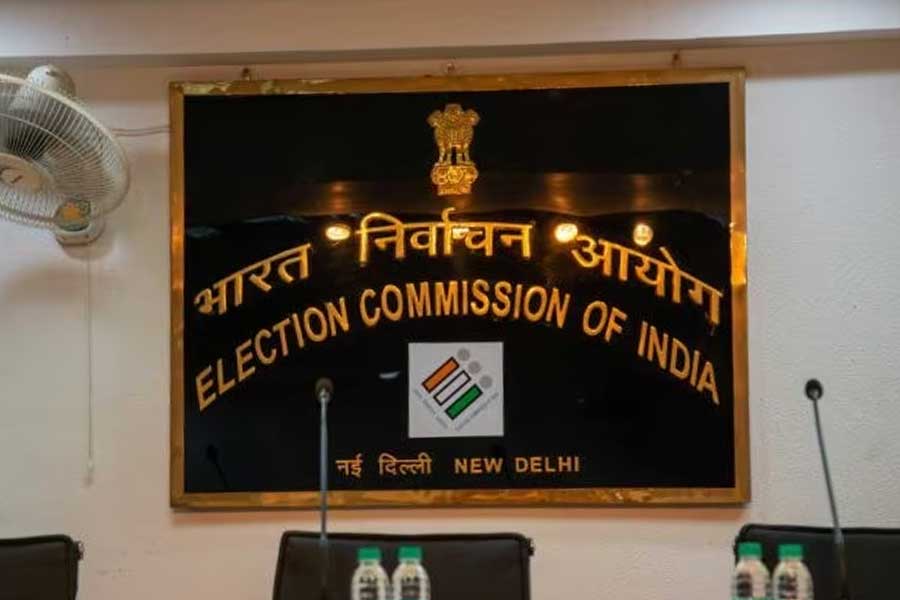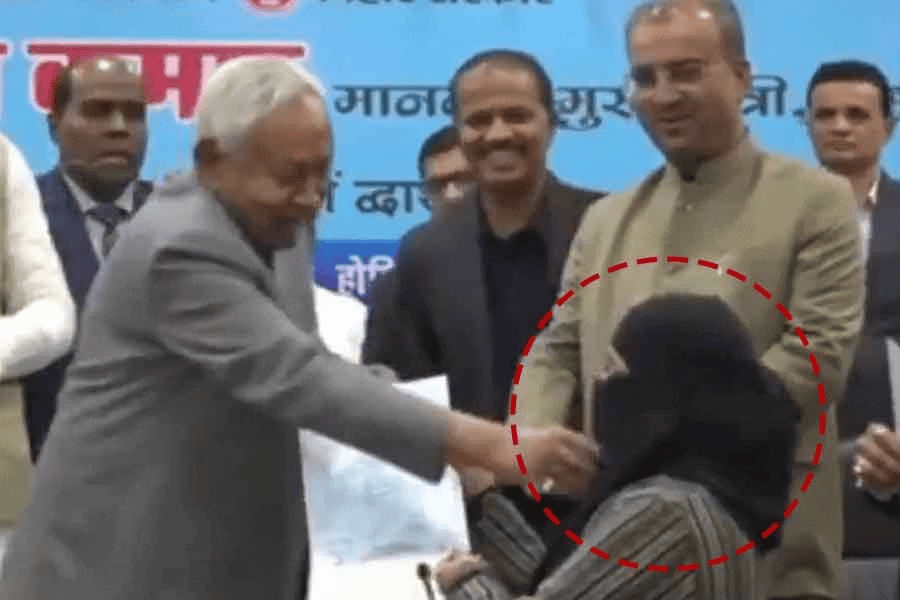 |
| WITH A LITTLE HELP FROM FRIENDS: A group of soldiers at Siachen |
Siachen Glacier Base Camp, May 13: A Bengali officer whose Tamil is better than his Hindi, a Jat commander from Haryana, Hindus, Sikhs and Muslims from Jammu and Kashmir, Buddhists from Ladakh ? the composition of the Indian military forces ranged against Pakistan’s largely Islamicised army in the Siachen frontier presents a microcosm of India’s plural society in the toughest of battle zones.
Advancements in medicine and technology have combined with a two-decade-old habit of war-making in forbidding heights for the Indian Army to dig deep into its human resources. The army is now able to deploy soldiers from as far away as Kanyakumari’s tropical climes ? soldiers who would have the greatest difficulty acclimatising in the glacial terrain ? at posts 12,000-22,000 feet high, where oxygen is rare and breathing a burden on the lungs.
With its current deployment along the Saltoro Range that flanks the Siachen Glacier and overlooks Pakistani positions across the Actual Ground Position Line, the military has scaled heights of secularism in this frontier that is an advertisement for Indian multiculturalism at its best.
For a large part of the area under its responsibility, the Siachen Brigade has deployed battalions from the Jammu and Kashmir Light Infantry, the Madras Regiment and the Ladakh Scouts. Of the three, the Madras Regiment is the biggest surprise. Soldiers of the regiment are drawn almost wholly from south of the Vindhyas. The battalion is commanded by an officer who describes himself as a “A Bong by birth and Tamil by practice”.
But posting a Tamilian from Madurai in a post like Sonam (21,000 feet) can also create funny situations at the time of the ceasefire when soldiers can’t even fire to cut the boredom. Just before the battalion from the Madras Regiment was deployed in the central sub-sector, it was manned by a battalion with troops mostly from north India who were at ease speaking Hindi or Urdu.
Bored Indian and Pakistani soldiers ? they have little to do but stare at one another ? sometimes wave hands and shout expletives or pleasantries to acknowledge the other’s presence. One officer narrated how a lonely Pakistani soldier at a post 400 metres away often shouts at Indian troops only hear a human voice.
Another soldier from Pakistan’s Punjab regiment shouted that he was feeling great that day because his leave had been sanctioned and he was going home for a week. An Indian soldier responded: “My good wishes to your wife and children”.
But now, even when the soldiers from Pakistan’s Punjab shout, south Indian soldiers just stare back, stoic and uncomprehending. They do not quite follow the Urdu. The Pakistani posts are manned mostly by its soldiers of the Punjab, Northern Light Infantry and Baluch regiments, troops drawn from the plains of the Indus, the northern areas and from villages not far from its border with Afghanistan.
Soldiers deployed in the Siachen also present a peculiar picture of the Indian Army. Nowhere else would the army tolerate long-haired, pony-tailed or bearded (non-Sikh) troops. An officer from the northern glacier who was just being de-inducted and is now at the base camp runs his fingers through his facial foliage and explains: “It doesn’t feel bad now and it’s a pity I have to shave it off. But I kept it as protection against sunburn and chilblains. I’ve done a little over three months at the heights and will be shaving this evening.”
Says Wing Commander Jeene J. Erinjeri, a Malayali from the Kottayam backwaters of Kerala who commands the 114 helicopter unit of small two-seater Cheetahs that fly across the glacier and the heights performing impossible feats: “I think our choppers are the most welcome sight for the soldier up in that post there.” The Cheetahs ferry mail, medicine, food, rations, arms, munitions and patients.
Another surprise, troops from the Madras Regiment have actually recorded fewer weather-related casualties than troops from the Jammu and Kashmir Light Infantry. They were extra careful just because they were not from these parts.
The Ladakh Scouts, troops for which are drawn from the region and comprise mostly Buddhists, are at home here. But a battalion of the scouts ? commanded by a man from Varanasi ? that was patrolling the China border is now headed for a posting in the plains.
The reason the army and the air force can now delve so deep into their human resources is not hard to trace.
About 24 years ago, in September 1982, a writer for The Telegraph broke the story of the military manoeuvres in the Siachen Glacier region. Mountaineer and historian Joydeep Sircar wrote of “Oropolitics” ? the abuse of mountaineering ? about the same time that Indian and Pakistani forces began sending expeditions to explore the eastern Karakoram.
The Indian troops moved in first and in April 1984 with Operation Meghdoot captured the Saltoro heights.
In the 22 years of Operation Meghdoot, the Indian military has honed “oropolitical” skills to such an extent that manoeuvres in Siachen Glacier have become a habit. Indeed, it is difficult to find a soldier in the army today who has put in at least three years of service and does not have a medal to show for his high-altitude posting.
Habits die hard, and for the Indian military Siachen is a habit that will not be easily jettisoned. When the political leaders of India and Pakistan push for a settlement to the dispute later this month, their positions will be conditioned by that knowledge.











